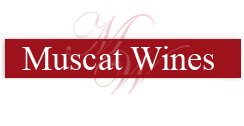MUSCAT WINES OF NEW ZEALAND
Captain James Cook took possession of the New Zealand islands for Britain in 1769. The first person to plant vines in the North island was the Anglican missionary, Samuel Marsden, in 1819. Charles Darwin visited the islands in 1835 and noted the presence of grape vines. James Busby is considered to be the first “producer” of wine in New Zealand.
Later, the wine growing region around Auckland was created by Dalmatian immigrants and even today Croatian wine growers are a large part of wine production in New Zealand.
Phylloxera hit the vineyards in 1895. The main measure implemented to solve the problem was the planting of phylloxera-resistant grape varieties. Beginning in the 1960s the planting of European varieties was encouraged and the Muller-Thurgau grape was a favorite for some time. Since the 1980s wine production in New Zealand has grown in quantity and quality. The best known wines are the Sauvignon Blancs of the Marlborough area.
Muscat grapes are not extensively grown in New Zealand. What was most commonly grown is a lesser known grape called Dr. Hogg Muscat (sometimes called Dr. Hoog). Its popularity appears to be waning. In 1989 the grape made up 5% of national plantings; in 2009 it is not mentioned, being included on the “Other” category (4%).
There is however some Muscat wine being produced in the country.
New Zealand Muscat Wines
• Blackenbrook Nelson Muscat 2010, 2011.
• Corbans Estate Gisborne Muscat 1996
• Matua Valley Late Harvest Muscat 2004
.
• Moana Park Botrytized Hawke’s Bay Muscat. Hawke’s Bay Region.
• Millton fortifies July Muscat 2010. Gisborne Region. Organic.
• Millton Mistell July Muscat 2011. Gisborne Region. Fortified
• Millton Te Arai Vineyard Muskats at Dawn 2010. Gisborne Region.
• Sojans Fusion Sparkling Muscat Magnum 2009. Gisborne Region.
• Sojans Fusion Sparkling Rose 2009. Gisborne Region.
• Twilight Vineyards Ormond Muscat 2004. !00% Dr. Hogg. Gisborne Region.
• Wishart Late Harvest Hawke’s Bay Muscat 2004. Hawke’s Bay Region.
